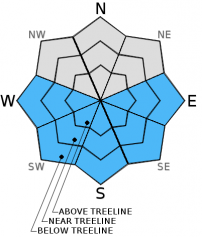| Thursday | Thursday Night | Friday | |
|---|---|---|---|
| Weather: | Sunny becoming partly cloudy for part of the afternoon | Clear to partly cloudy | Sunny becoming partly cloudy |
| Temperatures: | 50 to 56 deg. F. | 31 to 37 deg. F. | 49 to 55 deg. F. |
| Mid Slope Winds: | Variable | Southwest | Southwest |
| Wind Speed: | 10 mph | Light increasing to 10 to 15 mph after midnight | 10 to 20 mph with gusts to 30 mph increasing to 15 to 25 mph with gusts to 45 mph in the afternoon |
| Expected snowfall: | 0 | 0 | 0 |
| Thursday | Thursday Night | Friday | |
|---|---|---|---|
| Weather: | Sunny becoming partly cloudy for part of the afternoon | Clear to partly cloudy | Sunny becoming partly cloudy |
| Temperatures: | 45 to 50 deg. F. | 30 to 35 deg. F. | 43 to 49 deg. F. |
| Ridge Top Winds: | Southwest | Southwest | Southwest |
| Wind Speed: | 10 to 15 mph | 10 to 15 mph increasing to 15 to 25 mph with gusts to 40 mph after midnight | 20 to 30 mph with gusts to 45 mph increasing to 30 to 45 mph with gusts to 75 mph in the afternoon |
| Expected snowfall: | 0 | 0 | 0 |























